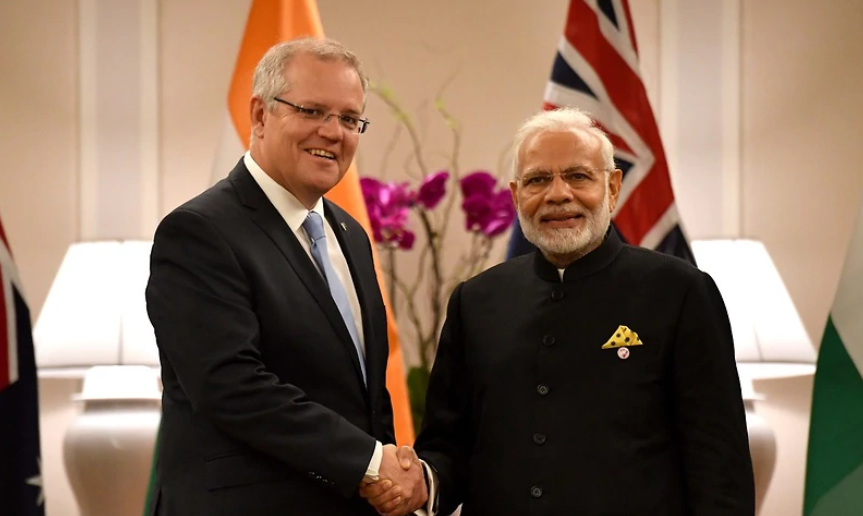
Australia pushes for trade links with India after trade spat with China
Australia is pushing its trade links with India and other Asian economies following its growing tensions with China, Bloomberg has reported.The student flow from India expanded 32% in 2019, making the country the fastest growing education market for Australia. India has surpassed China as the largest source of net migration to Australia, and the Indian diaspora is the third largest Down Under, just behind China and the UK.

Australia is pushing its trade links with India and other Asian economies following its growing tensions with China, Bloomberg has reported.
The student flow from India expanded 32% in 2019, making the country the fastest growing education market for Australia. India has surpassed China as the largest source of net migration to Australia, and the Indian diaspora is the third largest Down Under, just behind China and the UK, Bloomberg said.
The factors that recently exacerbated the Australia-China ties to the lowest level in 30 years are: Canberra’s calls for an international inquiry into COVID-19’s origins, which was taken by Beijing as a political attack, with China imposing barriers on barley, beef and wine from that country.
Yet another aspect of renewed Australian interest in India is the country’s rising population, which is set to overtake China’s in 2027. This would give rise to a huge market of goods and services.
Prime Minister Scott Morrison held a virtual summit with his Indian counterpart Narendra Modi in June and the two signed a defence pact and upgraded ties to a Comprehensive Strategic Partnership. The trade ministers of Japan, India and Australia recently decided to work towards achieving supply chain resilience in the Indo-Pacific region.
“We can sell India education, healthcare, and there’s potential in science and technology,” said Ian Hall, a professor of international relations at Griffith University in Queensland. “It’s much more the consumer market of India’s growing middle class than goods.”
Trade with India has its own challenges. One of them is the government’s stress on economic nationalism, as showcased last year when it pulled out of the Regional Comprehensive Economic Partnership designed to free up trade.
Related news: Japan, Australia, India discuss plan to counter China’s trade dominance
Delhi wants to send lots of people to Australia on work visas and doesn’t want to reduce tariffs, according to former Australian Trade Minister Craig Emerson, who initiated the Australia-India free trade negotiations in 2011, resulting in a two-way trade around just one-tenth of China-Australia shipments.
“India is highly concerned about its trade deficit,” said Lai-Ha Chan, a political scientist at the University of Technology in Sydney, who notes that after signing free trade agreements with South Korea and Japan, India’s trade deficit with those nations ballooned. “It would be very worried about Australian farm products, such as dairy, harming Indian farmers.”
Australia’s most valuable export, iron ore, has not been caught in China’s cross hairs yet, perhaps due to a lack of alternative suppliers. Emerson says China is buying ore carriers that improve the economics of long-distance shipping from Brazil and purchasing Guinea mines.
“It’s entirely possible China, once it gets all three mineral provinces in a row — Guinea, Brazil and Australia — will play one off against the other to get a better price,” he said. “If you’re China, you’d say ‘where’s our vulnerability? Iron ore. So let’s diversify, let’s fix that.’ They may never need to activate it, but it’s available.”

